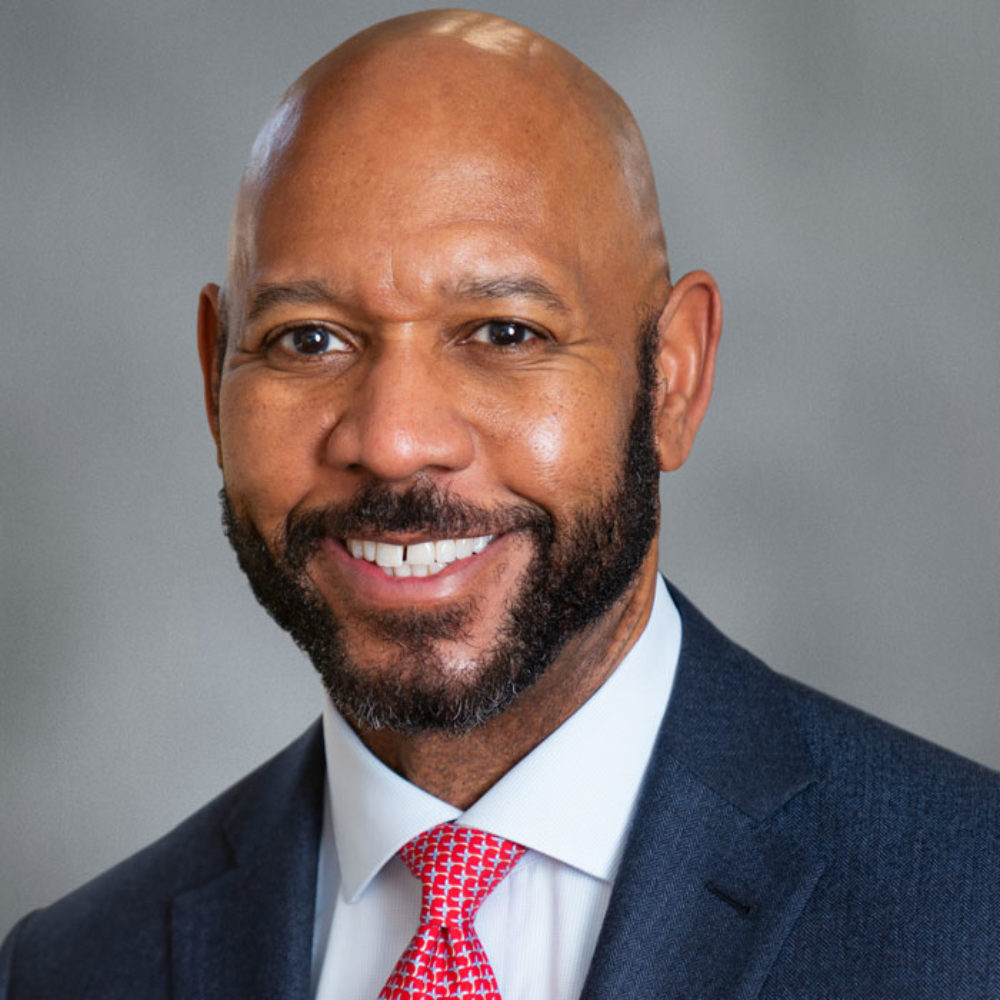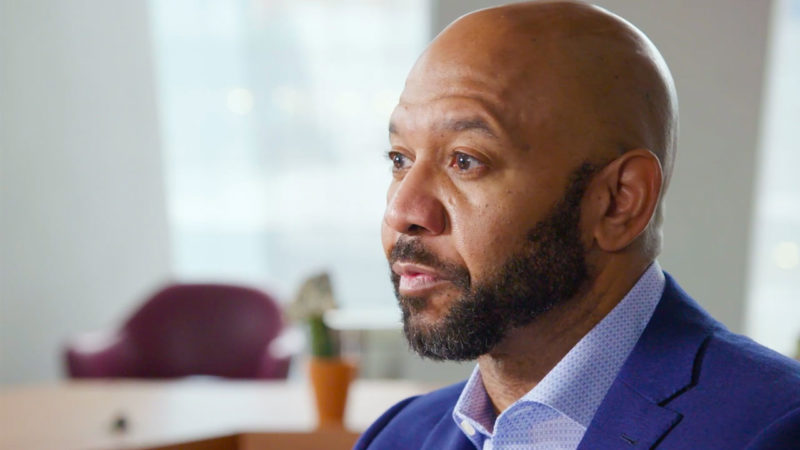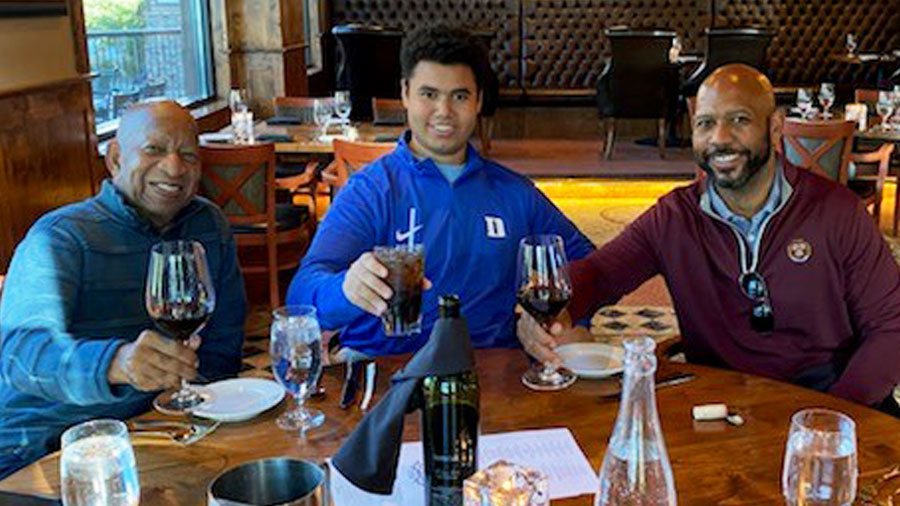Driven to excellence, Williams carries the banner of generations
The drive to succeed runs deep in the family of Ather Williams III, who is charting a course of excellence for Wells Fargo Strategy, Digital, and Innovation.
As Ather Williams III arrived at Harvard for his freshman year, emotions welled up inside him. Since the age of six, he’d dreamed of and worked for that moment. Yet as strong as those feelings were that day, it wouldn’t compare to the day his grandfather visited campus the first time. “Seeing the look of pride on his face was worth every minute of hard work, every late night studying session, and every other thing that had pushed me to make this happen,” said Williams, head of Wells Fargo Strategy, Digital, and Innovation. “I was just so happy he lived long enough to see me there.”
The drive to succeed runs deep in Williams’ family — with four generations of men named Ather. It powered him from Harvard Business School into consulting work, a financial analyst job with Walt Disney Co., a stint as a Silicon Valley executive, and a series of executive jobs with large U.S. banks, culminating with a seat on CEO Charlie Scharf’s senior management team at Wells Fargo.
Along his path, Williams, 50, was always cognizant that he stood on the shoulders of the Black men who came before him. His grandfather rose out of racially segregated Arkansas nearly a century ago, moved to Chicago to work in the steel mills, and raised a family. Williams’ father safely navigated the tough South Side of Chicago, became the first in the family to go to college, and eventually rose in the executive ranks of Johnson & Johnson.
“To me, it’s all about every generation taking a step forward,” Williams said. “From my grandfather having a third-grade education, to my father and his master’s degree, to me being at Harvard, it’s basically the American dream.”
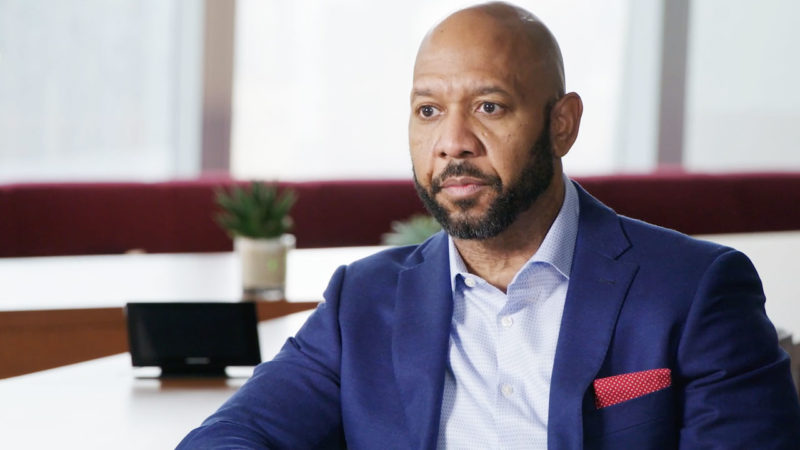
A deep dive
‘Ahead of many peers’
That dream has taken Williams around the world, where he has become an international authority on banking transformation, strategic planning, and the digitization of financial services — areas that he champions at Wells Fargo. He has also received a number of honors, including MBA Business Magazine’s “Top 100 Executive Leaders Under 50” and membership in the Executive Leadership Council, a national advocacy group of prominent Black executives. In 2019, he was named one of EMpower’s “Top Ethnic Minority Executive Role Models.”
For years, Williams has stood out among global bankers with his understanding of the future of banking, said Joy Macknight, editor of The Banker magazine, published by The Financial Times of Great Britain. She recalled her first interview with him in 2015 at Sibos, one of the financial services industry’s premier global conferences.

“Ahead of many of his peers, he provided very insightful comments on the way the banking landscape was changing,” she said. “Clearly, he had his finger on the innovation pulse of the industry, calling out the rising importance of distributed ledger technology, zeroing in on its ability to increase transparency in transactions, and connecting financial institutions in a new way.”
As a lifelong self-described “tech geek,” Williams’ vision for the role of innovation in banking has taken center stage in his career. Scharf highlighted that expertise last year when Williams was named head of Strategy, Digital, and Innovation.
“Ather is a strong, experienced leader with nearly three decades of global banking experience and deep expertise in strategic planning and delivering digital and innovative solutions for customers and clients,” Scharf said. “He is uniquely qualified to lead this group that aligns our strategic, long-term planning efforts with our strong focus on creating a more innovative, digitally enhanced company.”
Before joining Wells Fargo, Williams worked nearly a decade for Bank of America, first as head of Global Transaction Services (GTS), and most recently as head of Business Banking. Under his leadership, GTS was awarded two patents in payments technology. Before that, Williams spent eight years in leadership roles at JPMorgan Chase with responsibilities that included business segment strategies, products, and technology solutions in Treasury & Securities Services.
A road to leadership
From the time he was a child, Williams’ life has been characterized by intellectual achievement, character, and a penchant for leadership, according to his father, Ather Williams Jr., an executive coaching consultant and retired senior executive for Johnson & Johnson.
His father recalled an instance during Williams’ college days when he was in line to run for president of a high-profile fraternity. Ahead of the vote, a rowdy, but powerful group of students tried to force their way into becoming members. At significant risk to himself, Williams spoke out and opposed them. The fraternity rallied around him and he was elected by an overwhelming margin.
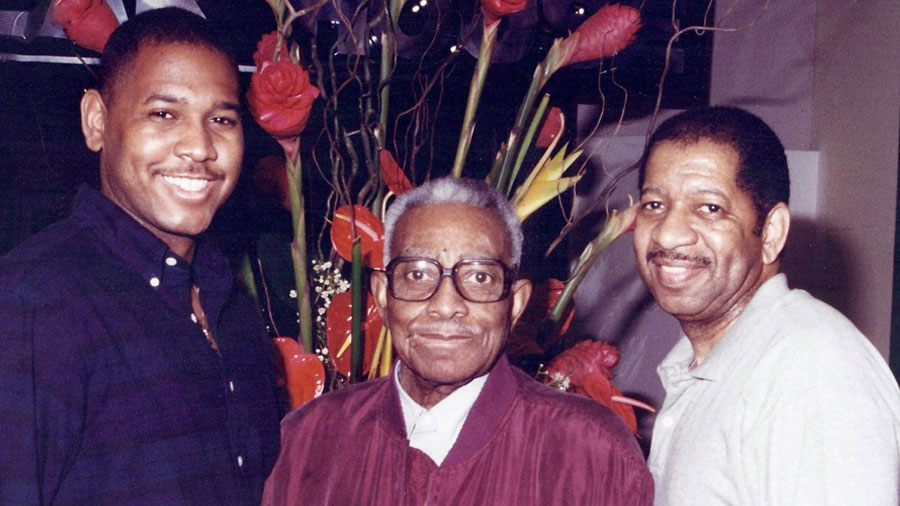
“Everyone cheered him,” his father said. “Ather stood up to that group, and didn’t compromise his values, which is a big part of him being the leader he is today.”
The road to leadership began early in life for Williams, who learned confidence and grace from his father, especially in dealing with societal racism. As a child, for example, the family moved to a predominantly white neighborhood in the Chicago suburbs, and someone painted a racist threat on the side of their house. His father called the police, who tracked down the perpetrator — the son of the police chief.
After talking to Williams’ father, the chief apologized to the family and made his son pay to have the racist threat removed from the home.
Learning the value of mentors
Growing up, Williams said he frequently encountered racism in other corners, including racist insults from students on the school bus and chants from the crowd when he played basketball for his Catholic prep high school, where he was the only Black player on the team.
“We would go on the road for a game and the things that people would say in the crowd were pretty horrible,” he recalled. “But it really just hardened you not to lose your resolve because you know you can’t let them win. So you just learn to deal with it.”
He has sought to instill that kind of resoluteness in his children to help them respond to the racism they encounter as the children of a Black father and a white, part-Jewish mother. Williams met his wife Elizabeth, a former Levi Strauss & Co. executive, at Harvard, and they married in 1999.
His father has also served as a role model in crossing the barriers African Americans often experience in the business world, Williams said. He learned, for example, the value of having a mentor in an organization, whether the mentor is a person of color or not. For his father, many mentors at Johnson & Johnson were white leaders who became key career allies.
“One of the biggest lessons I learned from him was that mentors don’t necessarily have to look like you,” Williams said. He noted his first mentor in banking was a Black, lesbian woman — “an amazing problem solver and probably one of the smartest people I’ve ever worked for in my life.”
Overall, the experience with mentors has made him “passionate about carving pathways for others,” said Williams, who is active in a number of groups advocating diversity and inclusion.
Earning a seat at every table
Shane O’Kelly said it took only one study group session at Harvard to become fast friends with Williams. More than two decades later, the longtime friends and roommates at Harvard Business School remain close.
O’Kelly, now an executive with Home Depot Inc., described Williams as “an exceptional leader with the rare trifecta of intellectual knowledge, emotional intelligence, and managerial acumen to succeed at a senior level. He can transcend ranks and talk to people in the boardroom as easily as he can talk to the newest teller. And both can come away knowing he understands and empathizes with them.”
Williams has also effectively navigated the racial hazards of the corporate workplace, including conscious and unconscious bias, he said.
“Ather has more than earned the seat at every table he’s been at,” O’Kelly said. “And the thing I find most special about Ather is how he’ll acknowledge the way the world works, but never let it affect his commitment to excellence. He knows the standard is excellence and he delivers on it every time.”
Delivering for Wells Fargo
For Williams, leading Wells Fargo’s strategic digital activity comes at a critical nexus in the history of banking, where financial technology companies are gaining market share in profitable services that banks have traditionally owned. At the same time, consumers are increasingly changing the way they do banking and demanding more seamless online services.

Against that backdrop, banks must come to terms with how to flourish in the age of digital banking, he said. To that end, Williams said there are three essential ingredients for a digital strategy: They must be customer-focused and personalized, “mobile first” in design, and seamless in experience across all channels.
“The first rule of any business is your customer comes first,” he said. “Thinking about the customer’s needs and what they want must be at the top of the list. So in building our digital strategy, it has to be personalized, whether the customer is an 18-year-old who wants a mobile experience or an older person who wants a different type of interaction.”
To execute that strategy and deliver results, Williams said there are several major skills he brings to the table: Building an effective team, having an intuitive vision for the future, and knowing how to get there.
“I’ve always been good at connecting with people,” he said. “So I think I can go out and find the right team of people to work together in executing our strategy. I’ve also always had this curiosity and desire to push things forward and figure out where we go next with technology — not to rest on our laurels, but to migrate and evolve to where our customers are going.
“So that’s what I want to bring to this job,” he added. “It’s constantly challenging those around me to think differently about banking, because if we don’t think differently about it, someone else out there is going to do it first.”

